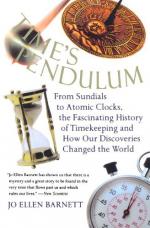|
This section contains 551 words (approx. 2 pages at 300 words per page) |

|
The atomic clock is a timekeeping device of unparalleled precision that uses the vibration frequencies within certain atoms and molecules. The time kept by atomic clocks is now accepted as the international standard. American physicist William Frank Libby (1908-1980) formulated the atomic clock theory in 1946. He envisioned a clock whose timing was controlled by an oscillator, but one whose frequency did not drift. This was accomplished by comparing the oscillator's frequency to that of an electron moving from one energy level to another. Since the electron's frequency is unfaltering for any particular element, Libby's clock was very accurate--the model built at the National Bureau of Measures in Washington, D.C., was precise to about 21 picoseconds per year. The name most commonly associated with the invention of the atomic clock is that of Charles Hard Townes. The research Townes was conducting on microwave oscillation closely paralleled that...
|
This section contains 551 words (approx. 2 pages at 300 words per page) |

|


